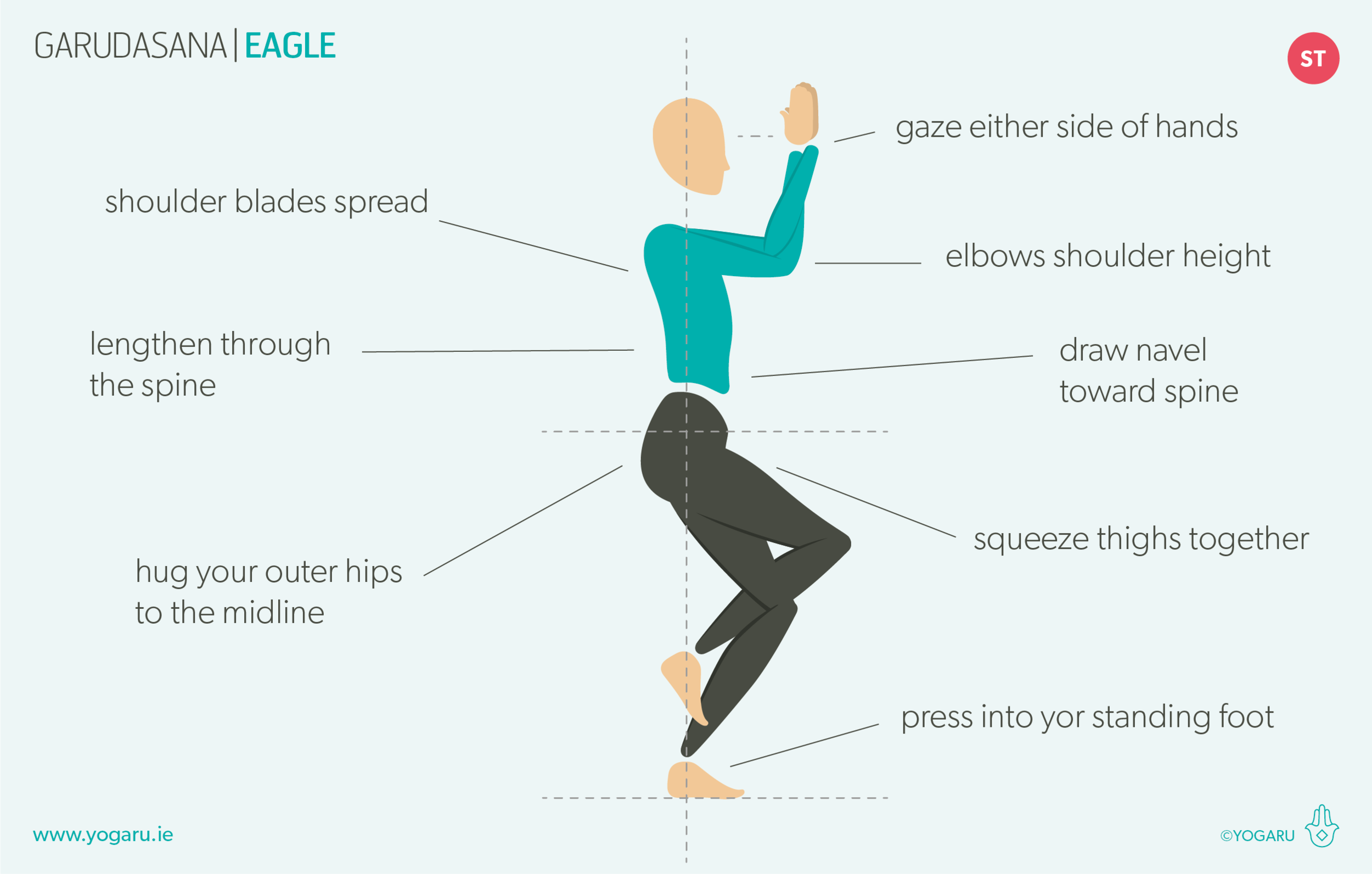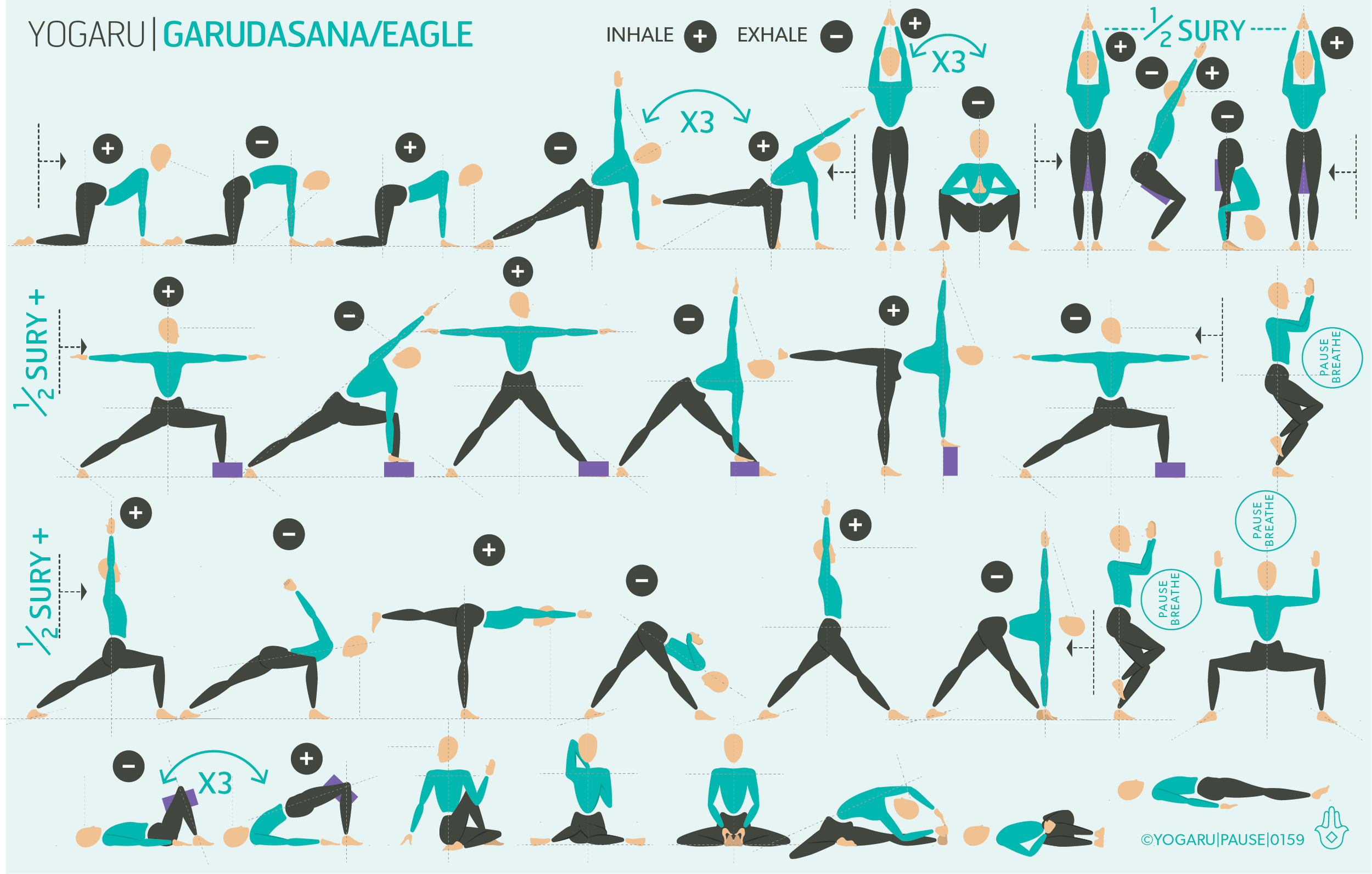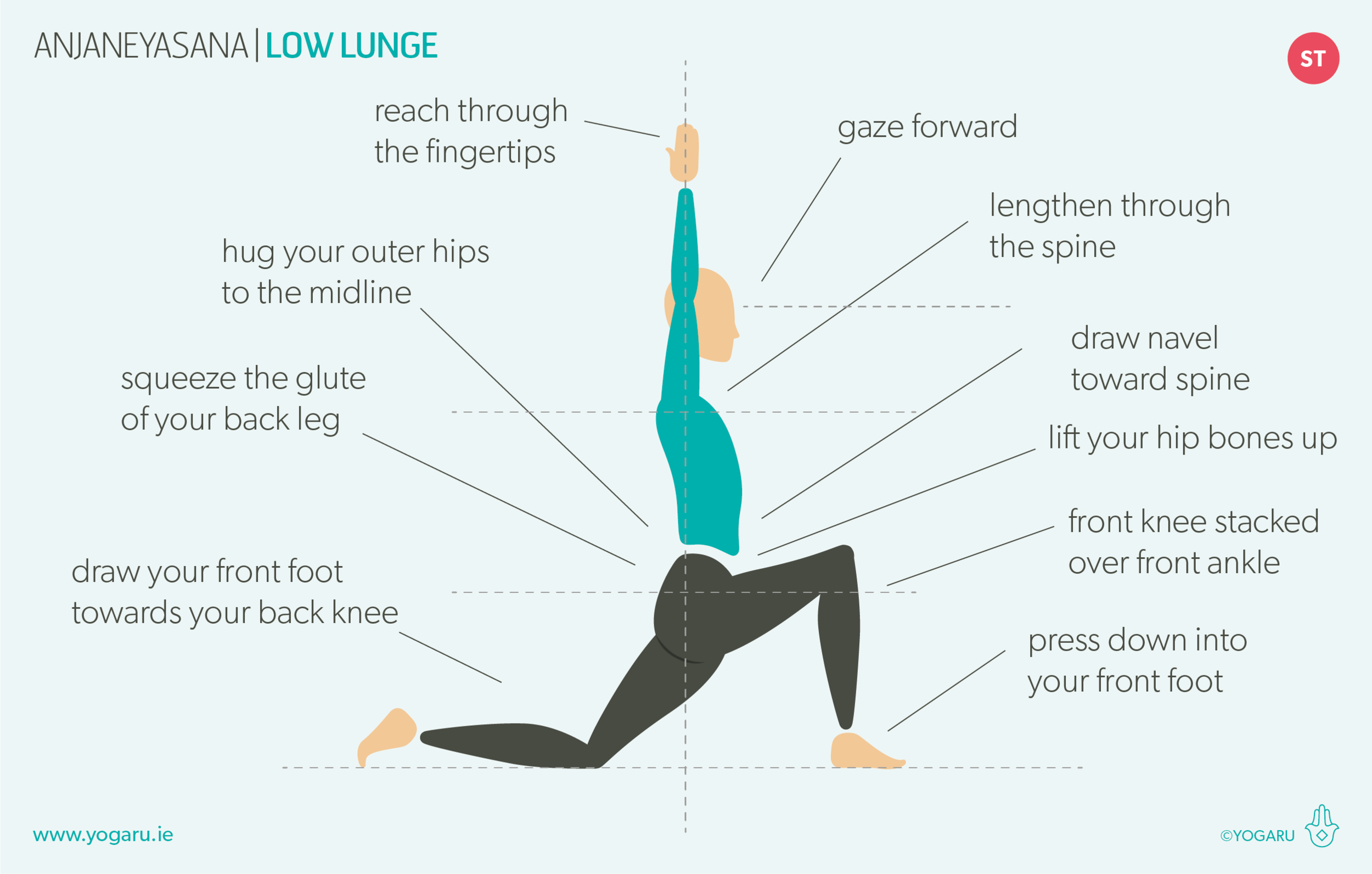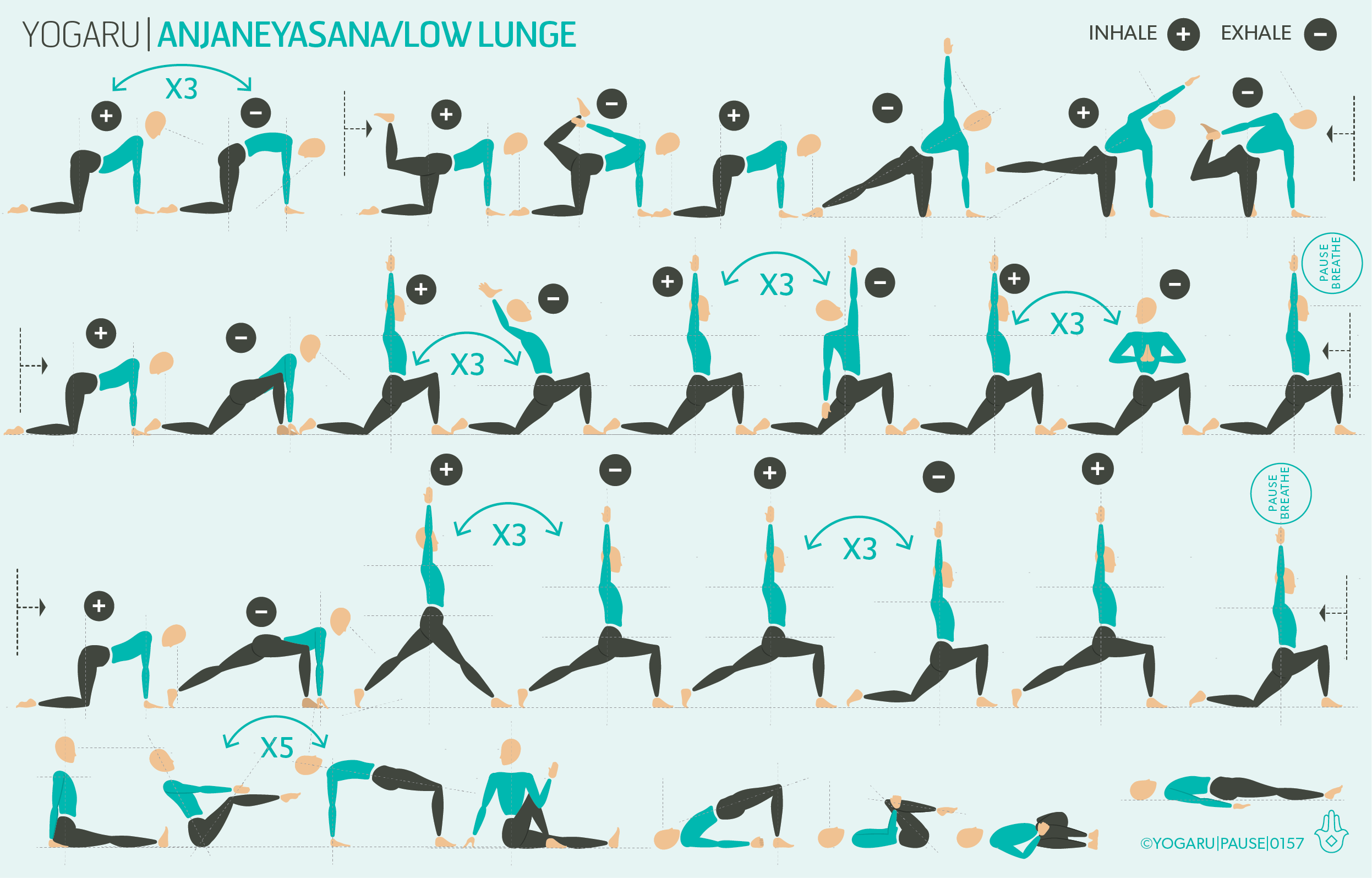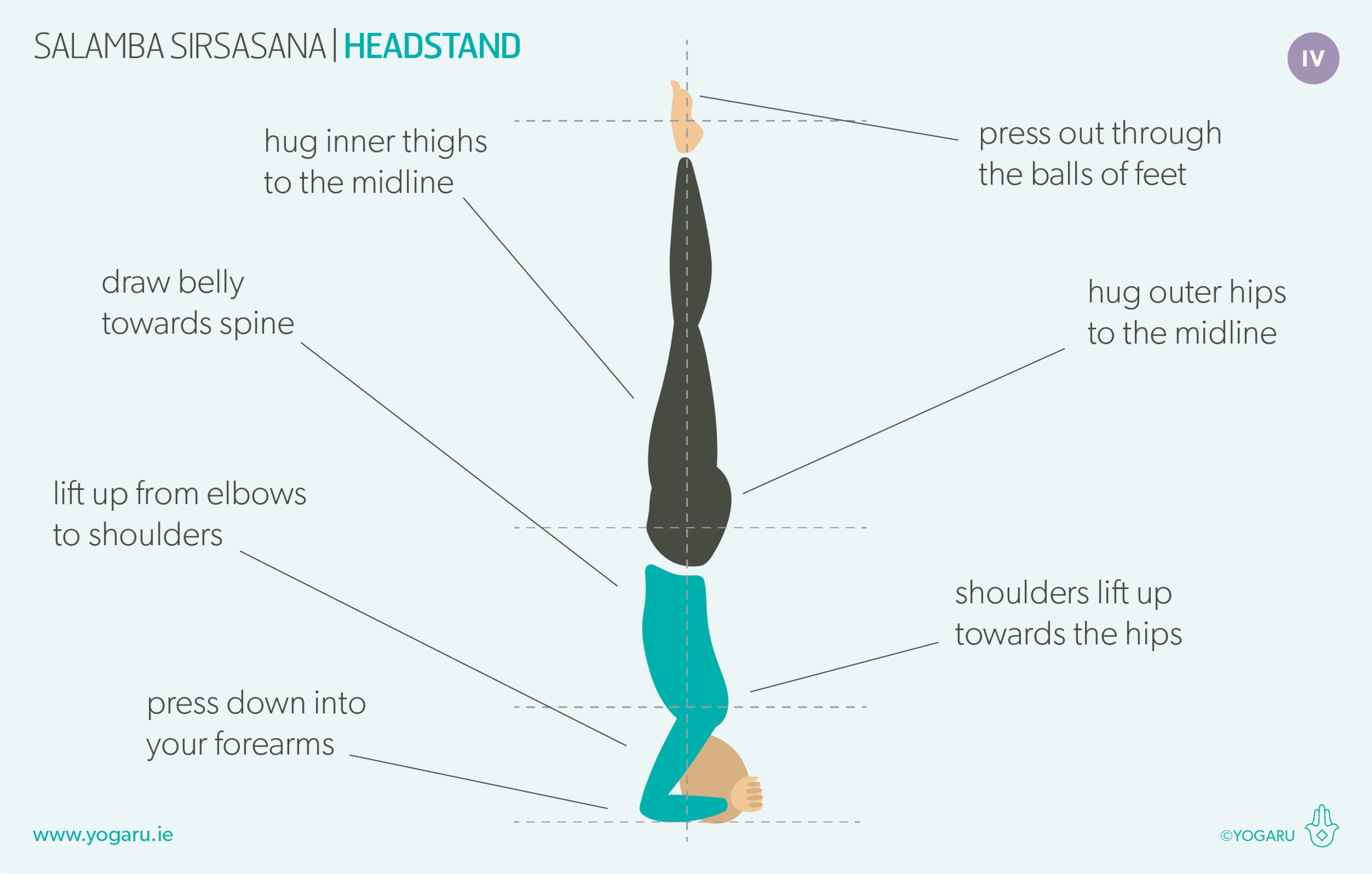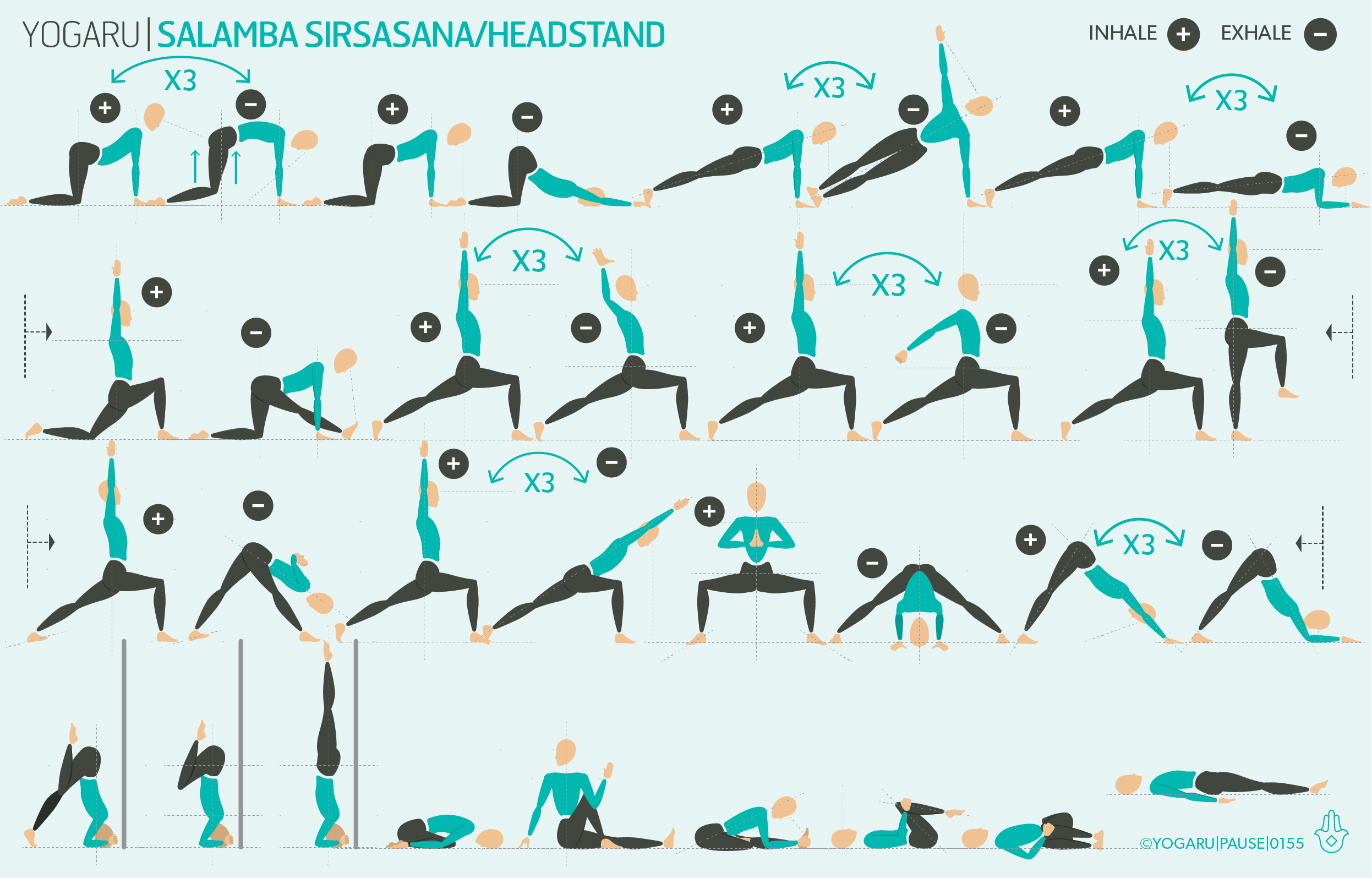LONGEVITY OF STANDING STABILITY
Garudasana/Eagle is a standing balancing pose which builds focus and concentration and gives a lovely stretch across the back of the shoulders. Single legged standing poses are important poses to continue to add into your practice to build ‘balance’ stamina. Fall risk and feeling a little less sturdy on our feet is part of the ageing process. This pose, and similar poses like Vrksasana/Tree and Viradhadrasana III/Warrior III, train the brain to work out the changing centre of gravity and enlist the deep stabilising muscles of the hips, core and spine to maintain standing position. Because of the angle of the hip socket, the position of the legs of adduction, and internal rotation in Garudasana/Eagle is not an easy shape for most people to take. It can expose tightness in the outer glutes, and the muscles that attach to the IT band. This makes it difficult to cross the legs sufficiently to get the wrap of the lower leg, which can put pressure on the knee joint.
THE BENEFITS OF GARUDASANA/EAGLE
Garudasana/Eagle stretches the shoulder, calves, the outer hips, the piriformis and the tensor fasciae latae. While at the same time these outer hip muscles, and the deep stabilising muscles of the hip, are contracting to help maintain balance. As with all the standing balancing poses there are more muscles strengthening than stretching – the inner groins, core; and the glutes, hip flexors, hamstrings and ankles of the standing leg. It is also a great pose to help you strengthen the spine by keeping yourself upright as you bend forward to facilitate the leg wrap.
EXPLORING GARUDASANA/EAGLE IN YOUR PRACTICE
Garudasana/Eagle is quite a human knot! There are lots of versions of the pose if either your hips or shoulders are not happy to tie themselves up into this particular pretzel shape. If the full leg wrap does not suit your hips, place a block on the outside of your standing leg and place your wrapping leg foot on the block instead of around the calf of the standing leg. If your shoulders restrict you from placing the palms of the hands together, place the back of the hands together or take it back another step and hug your arms around your shoulders which will give you the same opening to the back of the shoulders.
Strengthening the inner groins in adduction is not as prevalent an action in yoga poses. In this sequence you can find the strength of the inner groin by squeezing a brick between the thighs in the warm up half sun salutation on the first row which you will repeat at the start of each standing mini flow. In the second row place a brick on the inside of the front leg and press your thigh against your arm to find this same inner groin activation. In the third row continue to tap into this strength by hugging to the midline and using this action to stabilise the hips in some of these more challenging poses. Utkata Konasna/Goddess is the perfect counter pose for Garudasana/Eagle. It brings the hips into external rotation and abduction, which is the opposite to how they sit in Garudasana/Eagle, and is a more natural and secure position for the femur bone to sit in the hip socket. When you add cactus arms to Utkata Konasna/Goddess it gives the perfect unravelling counter pose for Garudasana/Eagle.
ALIGNMENT CUES
For this sequence remember to hug the outer hips to the midline in Garudasana/Eagle and squeeze to the midline.
Have a read of the tips below and either print out the sequence or save it onto your device:
From Tadasana, bend your left knee, cross your right leg over your left thigh, place your right toes beside your left foot, or hook your right toes around your left calf.
Bend your elbows, cross your left elbow over your right elbow.
Press the back of the hands together, or wrap your left hand around your right hand and press your palms together.
Lift your upper arms up, elbows lengthen forward, fingers reaching up, shoulder blades spread.
Keep your left knee bent, lengthen the spine, broaden through the collarbones, squeeze your upper thighs together, gaze either side of your hands.
To save the images for personal use click and hold down the image until the ‘save image’ option appears; on Mac hold down ‘control’ and click the image to get the option box; on PC right click on the image to get the option box. Scroll down in the ‘option box’ and click ‘save image’.
Ruth Delahunty Yogaru


